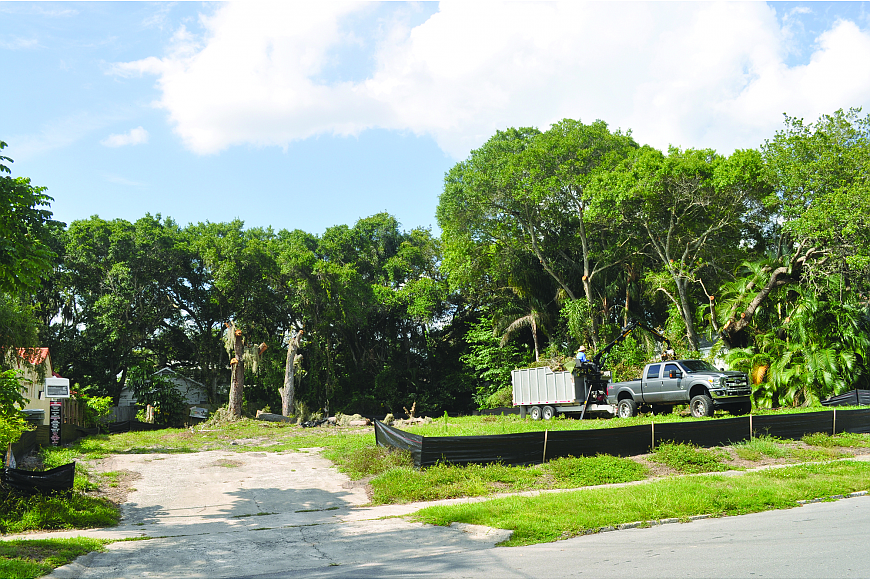- October 19, 2022
-
-
Loading

Loading

Thanks to an ongoing push from a grassroots group of residents, the city’s trees are on the verge of gaining more protection.
At the Sept. 21 City Commission meeting, Sarasota Neighborhood and Development Services Director Tim Litchet will ask the commission for authority to work on proposals to amend the current zoning regulations regarding trees. The agenda item is a response to a Coalition of City Neighborhood Associations resolution encouraging the city to focus on tree-related issues.
Although Litchet has no specific proposals yet, he mentioned some topics that have surfaced in discussions with neighborhood representatives, such as:
• Amending ordinances that might discourage tree preservation;
• Planting more trees in public areas to mitigate the loss of trees elsewhere;
• Reviewing definitions of which trees get the most protection.
“We’re hearing some good things from the public,” Litchet said, “and we want to take advantage of that.”
Over the past six months, tree protection sprouted to the forefront of the city’s agenda as a result of increased attention on the subject from CCNA. During its meetings, each neighborhood reports on the latest issues affecting residents. Over the course of this year, trees became one of the topics linking all corners of the city.
When one neighborhood reported trees were being cleared off lots for new construction, other neighborhood representatives said the same thing was happening in their area. When one neighborhood shared that delivery trucks were damaging their tree canopy, those in attendance confirmed the same issue existed elsewhere.
Residents took a proactive approach. Save Our Sarasota, a group that advocated for a comprehensive urban greenspace policy a decade ago, formed again to focus on tree issues. Other neighborhoods also focused on pursuing a solution.
“Almost every neighborhood is affected,” said Rob Patten, a Hudson Bayou resident who has taken a leading role in the effort to enhance tree preservation. “We identified the problem in a clear way and then we said, ‘Well, what can we do?’”
On Aug. 29, CCNA offered its support for a resolution detailing how the city could improve tree protection. CCNA endorsed three main points:
• The city should hire additional staff to deal with tree-related issues;
• The city should make more stringent its tree protection regulations;
• The city should re-establish an urban forestry program or division.
"The person who is maybe wanting to be cooperative with us doesn’t have the incentive to do so." — Tim Litchet
In its FY16 budget, the city already plans to add another code enforcement officer to work weekends. Residents have asked for the presence of code enforcement staff on the weekend, when tree cutting often occurs and the city is unable to respond until a tree is already removed.
Patten would like to see even more staff dedicated to tree issues. The CCNA resolution states an urban forestry program could focus on education and “establish a long-term dialogue for working together to protect Sarasota’s urban canopy.”
“An arborist is not enough,” Patten said. “An approach that’s comprehensive is an urban forestry program.”
Todd Kucharski, the city’s public works general manager, acknowledges that right now staff is forced to take a reactive, generalist approach to tree issues. He too would like to see a return to a specialized, specific maintenance program for the city’s trees — although budget limitations remain an obstacle.
City Sustainability Manager Stevie Freeman-Montes, who has helped coordinate meetings between concerned residents and staff, said she hopes to broaden the conversation to include developers and builders, especially if zoning changes are proposed.
Her explanation for the sudden focus on trees is simple: The city is growing, and residents are simply reacting to the ensuing changes.
“There’s so much development happening right now, and it’s happening at such a high rate that it’s kind of pushed these issues to the forefront,” Freeman-Montes said.